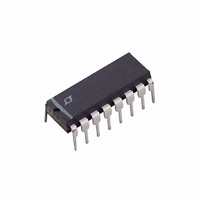LTC1149CN-5 Linear Technology, LTC1149CN-5 Datasheet - Page 8

LTC1149CN-5
Manufacturer Part Number
LTC1149CN-5
Description
IC SW REG STEP-DOWN 5V 16-DIP
Manufacturer
Linear Technology
Type
Step-Down (Buck)r
Datasheet
1.LTC1149CNPBF.pdf
(20 pages)
Specifications of LTC1149CN-5
Internal Switch(s)
No
Synchronous Rectifier
Yes
Number Of Outputs
1
Voltage - Output
5V
Current - Output
50mA
Frequency - Switching
250kHz
Voltage - Input
0 ~ 48 V
Operating Temperature
0°C ~ 70°C
Mounting Type
Through Hole
Package / Case
16-DIP (0.300", 7.62mm)
Lead Free Status / RoHS Status
Contains lead / RoHS non-compliant
Power - Output
-
Available stocks
Company
Part Number
Manufacturer
Quantity
Price
Company:
Part Number:
LTC1149CN-5
Manufacturer:
LT
Quantity:
6 244
Part Number:
LTC1149CN-5#PBF
Manufacturer:
LINEAR/凌特
Quantity:
20 000
APPLICATIO S I FOR ATIO
LTC1149
LTC1149-3.3/LTC1149-5
The LTC1149 series automatically extends t
short circuit to allow sufficient time for the inductor
current to decay between switch cycles. The resulting
ripple current causes the average short-circuit current
I
L and C
The LTC1149 series uses a constant off-time architecture
with t
Each time the P-channel MOSFET switch turns on, the
voltage on C
off-time, C
tional to V
current in inductor L, which likewise decays at a rate
proportional to V
the timing capacitor value.
The value of C
mode operating frequency, f:
A graph for selecting C
effects of input voltage is given in Figure 3.
As the operating frequency is increased the gate charge
losses will be higher, reducing efficiency (see Efficiency
Considerations). The complete expression for operating
frequency is given by:
8
SC(AVG)
C
T
OFF
= (7.8)(10
T
to be reduced to approximately I
Figure 2. R
determined by an external timing capacitor C
Selection for Operating Frequency
0.20
0.18
0.16
0.14
0.12
0.10
0.08
0.06
0.04
0.02
T
OUT
0
is discharged by a current which is propor-
T
0
f
T
is reset to approximately 3.3V. During the
. The voltage on C
is calculated from the desired continuous
–5
OUT
MAXIMUM OUTPUT CURRENT (A)
SENSE
1
)
U U
. Thus the inductor value must track
1 –
vs Maximum Output Current
T
2
versus frequency including the
V
V
OUT
IN
3
T
W
is analogous to the
4
1149 F02
MAX
5
OFF
.
U
during a
T
.
where:
V
V
when in regulation.
Note that as V
When the input to output voltage differential drops below
1.5V, the LTC1149 series reduces t
discharge current in C
prior to dropout.
Once the frequency has been set by C
be chosen to provide no more than 25mV/R
to-peak inductor ripple current. This results in a minimum
required inductor value of:
As the inductor value is increased from the minimum
value, the ESR requirements for the output capacitor are
eased at the expense of efficiency. If too small an inductor
is used, the inductor current will decrease past zero and
change polarity. A consequence of this is that the LTC1149
series may not enter Burst Mode operation and efficiency
will be severely degraded at low currents.
REG
OUT
f =
t
L
OFF
MIN
is the desired output voltage (i.e., 5V, 3.3V), while
is the actual output voltage. Thus V
t
= (1.3)(10
OFF
1
=( 5.1)(10
1400
1200
1000
800
600
400
200
Figure 3. Timing Capacitor Selection
1 –
0
0
IN
V
V
4
OUT
decreases, the frequency decreases.
5
)(C
50
IN
)(R
T
T
SENSE
FREQUENCY (kHz)
. This prevents audible operation
)
100
V
V
REG
OUT
V
)(C
IN
= 48V
150
T
) V
V
V
IN
IN
OFF
T
REG
= 12V
V
= 24V
, the inductor L must
200
OUT
by increasing the
)
= 5V
1149 F03
SENSE
250
REG
/V
of peak-
OUT
= 1














